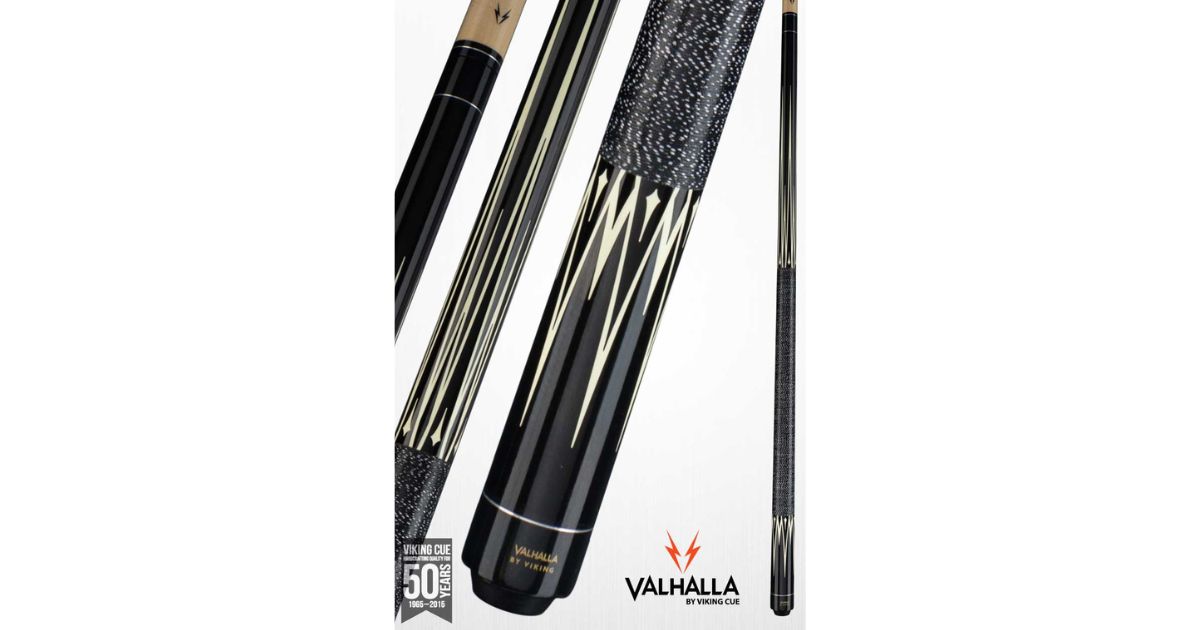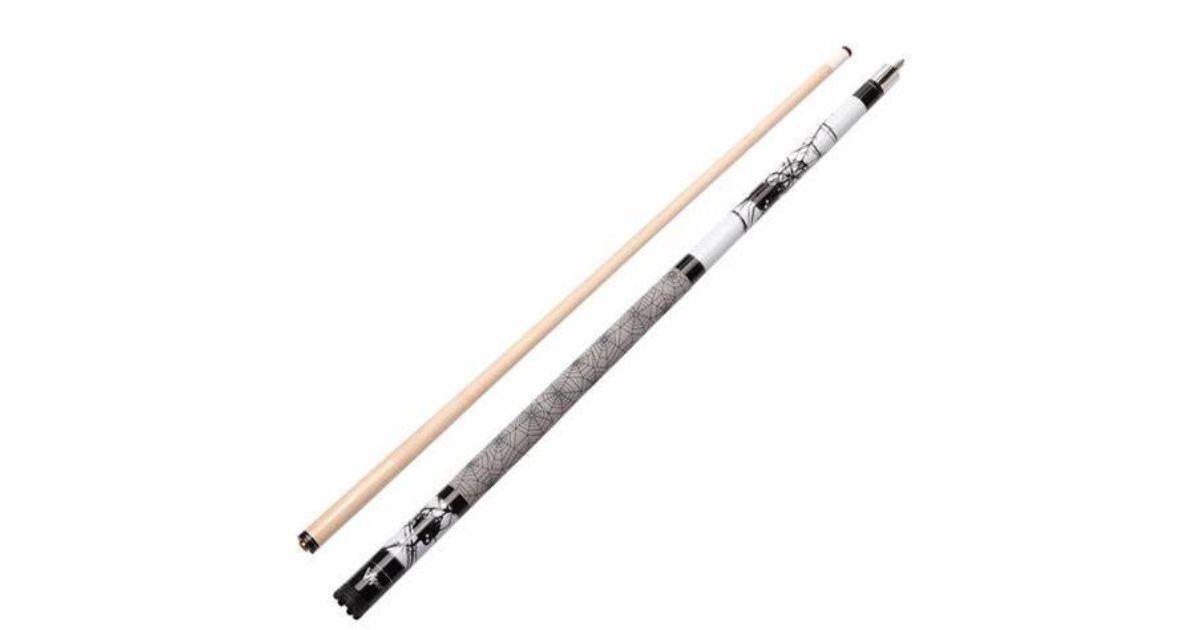Best Intermediate Pool Cues: Elevate Your Game With The Right Stick
Looking for the best intermediate pool cues? You’re in the right place, my friend! If you’re serious about taking your pool game to the next level, finding the right stick can make all the difference. A quality cue stick isn’t just a piece of wood; it’s your weapon on the table. Whether you’re a casual player stepping up your game or a competitive enthusiast, the right intermediate cue can transform how you play. So, buckle up, because we’re diving deep into the world of pool cues and helping you find the perfect one for your style!
Let’s be real here—choosing a pool cue can feel overwhelming, especially if you’re not sure what to look for. With so many options out there, it’s easy to get lost in the details. But don’t worry, we’ve got your back. In this guide, we’ll break down everything you need to know about intermediate pool cues, from materials and design to pricing and performance. By the end of this, you’ll feel like a pro at picking the right stick for your game.
Before we dive into the specifics, let’s talk about why intermediate cues matter. These sticks are designed for players who have moved past the beginner stage but aren’t quite ready for the high-end pro-level cues. They offer a sweet spot of balance, performance, and affordability. Think of them as the Goldilocks of pool cues—just right for elevating your game without breaking the bank. Now, let’s get started!
Read also:Discovering The Beauty Of Van Vleck House And Gardens A Hidden Gem
Table of Contents
- What is an Intermediate Pool Cue?
- Key Features to Look For in an Intermediate Cue
- Top Intermediate Pool Cues to Consider
- Choosing the Right Cue for Your Style
- Materials and Construction: Why They Matter
- Pricing and Value: Getting the Best Bang for Your Buck
- Performance Tips for Intermediate Players
- Common Mistakes to Avoid When Buying a Cue
- Frequently Asked Questions
- Conclusion: Time to Elevate Your Game
What is an Intermediate Pool Cue?
Alright, let’s start with the basics. An intermediate pool cue is designed for players who have a decent grasp of the fundamentals but are looking to refine their skills. These cues strike a balance between affordability and performance, making them perfect for players who want to step up their game without investing in a top-tier professional cue just yet.
Intermediate cues typically come with better materials and craftsmanship compared to beginner cues. They often feature higher-quality shafts, wraps, and tips, which can significantly improve your accuracy and control. Plus, they usually look way cooler than those basic beginner sticks, giving you that extra confidence boost when you’re lining up your shots.
Now, here’s the thing—intermediate cues aren’t just for intermediate players. Even seasoned players on a budget can benefit from these sticks. They offer solid performance without the hefty price tag of pro-level cues. So, whether you’re a weekend warrior or a tournament hopeful, an intermediate cue might just be what you need to take your game to the next level.
Key Features to Look For in an Intermediate Cue
When it comes to choosing the best intermediate pool cue, there are a few key features you should keep in mind. These factors can make or break your experience on the table, so pay attention! Here’s what you need to look for:
1. Shaft Material
The shaft is one of the most important parts of a pool cue, and the material it’s made from can greatly affect your performance. Most intermediate cues use either maple or graphite shafts. Maple is a classic choice, offering a smooth feel and good feedback, while graphite provides more durability and resistance to moisture.
2. Tip Type
Your cue tip is where the rubber meets the road—or rather, where the tip meets the ball. Look for a medium-hard tip, like a leather tip, which offers a good balance of control and spin. Avoid super soft tips, as they wear down quickly, and super hard tips, which can damage the cue ball over time.
Read also:Discovering The Rich Resources Of Omaha Public Library A Comprehensive Guide
3. Wrap Material
The wrap around the cue’s handle can make a big difference in comfort and grip. Common materials include leather, Irish linen, and synthetic wraps. Leather wraps offer a classic feel, while Irish linen provides excellent moisture absorption. Synthetic wraps are great for players who prefer a no-maintenance option.
4. Weight and Balance
Weight and balance are crucial for your shooting style. Most intermediate cues range from 18 to 21 ounces, so choose a weight that feels comfortable for you. Also, pay attention to the balance point—most players prefer a cue that balances slightly toward the front for better control.
Top Intermediate Pool Cues to Consider
Now that you know what to look for, let’s check out some of the best intermediate pool cues on the market. These sticks have been tested and trusted by players at all levels, so you can’t go wrong with any of these options.
- McDermott G-Core Series: Known for their innovative G-Core technology, these cues offer excellent feedback and control. Plus, they come in a variety of stylish designs to suit your personal taste.
- Predator 314 Series: Predator is a household name in the pool world, and their 314 series is no exception. Featuring a low-deflection shaft and a comfortable wrap, this cue is a favorite among intermediate players.
- Cue Concepts C31: This cue offers a great blend of performance and affordability. With a high-quality maple shaft and a stylish design, it’s perfect for players looking to upgrade without breaking the bank.
Choosing the Right Cue for Your Style
Not all intermediate cues are created equal, and what works for one player might not work for another. That’s why it’s important to consider your playing style when choosing a cue. Are you more of a power shooter or a finesse player? Do you prefer a heavier stick or a lighter one? These questions can help narrow down your options.
For power shooters, look for cues with a stiffer shaft and a slightly heavier weight. This will give you the control you need for those long, powerful shots. On the other hand, finesse players might prefer a lighter cue with a softer tip, allowing for more delicate touch and spin.
Tips for Testing a Cue
Before you commit to a cue, make sure you test it out. Here are a few tips to keep in mind:
- Take your time and try out several cues to see which one feels best in your hands.
- Pay attention to how the cue feels during different types of shots, from long draw shots to delicate bank shots.
- Ask for advice from more experienced players or store staff—they might be able to offer valuable insights.
Materials and Construction: Why They Matter
The materials and construction of your cue can have a huge impact on its performance. High-quality materials not only improve your game but also ensure that your cue lasts longer. Here’s a closer look at some of the key materials used in intermediate cues:
1. Wood
Wood is the traditional material for pool cues, and for good reason. It offers a natural feel and excellent feedback, making it a favorite among players. Common woods used in intermediate cues include maple, cherry, and ebony.
2. Graphite
Graphite cues are becoming increasingly popular due to their durability and resistance to environmental factors like humidity and temperature changes. They’re also great for players who prefer a more modern, sleek look.
3. Hybrid Designs
Some intermediate cues combine wood and graphite for the best of both worlds. These hybrid designs offer the feel of wood with the durability of graphite, making them a great choice for players who want the best of both worlds.
Pricing and Value: Getting the Best Bang for Your Buck
Intermediate cues typically range from $100 to $500, depending on the brand, materials, and features. While it’s tempting to go for the cheapest option, remember that you get what you pay for. A higher-quality cue will not only perform better but also last longer, saving you money in the long run.
Here are a few tips for getting the best value:
- Set a budget before you start shopping, but be flexible if you find a cue that’s worth the extra investment.
- Look for cues that come with accessories like cases or replacement tips, as these can add value to your purchase.
- Consider buying from reputable dealers or online retailers with good return policies, just in case the cue isn’t quite right for you.
Performance Tips for Intermediate Players
Having the right cue is only half the battle. To truly elevate your game, you need to focus on your technique and practice. Here are a few tips to help you get the most out of your intermediate cue:
1. Practice Consistency
Consistency is key in pool. Work on your stance, grip, and stroke to ensure that every shot feels the same. This will help you develop muscle memory and improve your accuracy over time.
2. Experiment with Spin
Intermediate players should start experimenting with different types of spin, such as topspin, backspin, and sidespin. This will give you more control over the cue ball and open up new possibilities on the table.
3. Focus on Strategy
Pool isn’t just about hitting the balls; it’s about strategy. Think ahead and plan your shots to keep your opponent in a difficult position. This will help you win more games and become a more well-rounded player.
Common Mistakes to Avoid When Buying a Cue
Even the most experienced players can make mistakes when buying a cue. Here are a few common pitfalls to avoid:
- Buying a cue that’s too heavy or too light for your style.
- Choosing a cue based solely on its appearance rather than its performance.
- Not testing the cue before purchasing—always try it out if possible.
Frequently Asked Questions
Got questions? We’ve got answers! Here are some of the most common questions about intermediate pool cues:
1. How often should I replace my cue tip?
It depends on how much you play, but most players replace their tips every few months. If you notice the tip wearing down or becoming misshapen, it’s time for a replacement.
2. Can I use a beginner cue for intermediate play?
Technically, yes, but you might be limiting your potential. Beginner cues often lack the quality and precision needed for intermediate play, so upgrading to a better stick can make a big difference.
3. Are custom cues worth the extra cost?
That depends on your priorities. If you’re looking for a cue that’s both high-performing and stylish, a custom cue might be worth the investment. However, if you’re on a budget, there are plenty of great intermediate cues available off the shelf.
Conclusion: Time to Elevate Your Game
There you have it, folks—a comprehensive guide to finding the best intermediate pool cues. Whether you’re a casual player or a competitive enthusiast, the right cue can make all the difference in your game. Remember to focus on key features like shaft material, tip type, and weight, and don’t be afraid to test out several cues before making a decision.
So, what are you waiting for? Head to your local pool hall or online retailer and start shopping for your new stick. And when you’ve found the perfect cue, don’t forget to share your experience with us in the comments below. We’d love to hear about your journey to becoming a pool master!
Until next time, keep practicing, keep playing, and most importantly, have fun out there!


